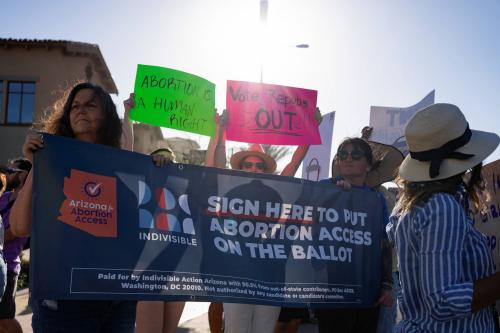Abstract
In the U.S., obesity is largely a poor people’s problem, and the same groups suffer higher well being costs from being obese. Scholars Carol Graham and Andrew Fenton evaluate well being surveys to help explain the variance in obesity incidence across socioeconomic cohorts in the United States and Russia, with a focus on the role of norms. Their research reveals modest evidence that causality runs from overweight to depression rather than the other way around. In Russia, obesity and well being are positively correlated. In sum, the relationship seems to be driven by the prosperity that is associated with obesity rather than by the excess weight per se, with no evidence of stigma. There is a wide margin in both countries for tailoring public health messages to marshal the attention of very different cohorts.
Variance in Obesity across Cohorts and Countries: A Norms-Based Explanation using Happiness Surveys
Obesity is increasingly recognized as a public health problem in the United States and many other countries. While estimates of the extent of the problem vary, there is no doubt that obesity has increased dramatically in the past two decades. In 2000, roughly 30% of Americans were classified as obese, defined as having a body mass index (BMI) of 30 or over; this is over twice the percentage of 1970. There are significant public health costs related to that increase, due to the strong links between obesity and diabetes, high blood pressure, and high cholesterol. A related and particularly tragic problem is the increased incidence in childhood obesity, which has implications for children’s health, self-esteem, and future longevity.
Most of the research and public policy recommendations focus on what we might call the “supply” side of obesity: the increasing availability of cheap, unhealthy food and the decline of exercise. That is certainly a central part of the phenomenon, at least in the U.S., where the upward trends are starkest of any country. Yet the changes are not the same across socioeconomic cohorts and racial groups in the U.S. Indeed, most of the increases are in the right tail of the weight distribution – in other words, heavier people getting heavier – and in the lower end of the income distribution – among poor people. While more recent evidence suggests some increase in overweight and obesity among wealthier cohorts, the incidence of extreme obesity and related morbidity and mortality is still much higher for the poor than for wealthier cohorts.
If the increase in obesity is merely a story about cheap food and sedentary lifestyles, why is there variance across socioeconomic cohorts? Why also did it not occur earlier? The upward trends in obesity occurred primarily between 1971 and 2001. Yet television was widely available well before 1971, and cable television was available by 1990, making it unlikely that the mere availability of television can explain the trend. Likewise, fast food was also widely available prior to the major increases in overweight.6 Some of the change must be coming from the “demand” side as well.



